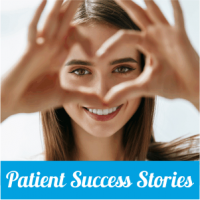Do Treatments and A Cure Lie Ahead for Retinal Eye Diseases?

Diseases of the retina are progressive diseases that worsen over time, causing permanent vision impairment. They can strike people of any age, from young children to older adults. Currently there is no cure, although there is news to report as researchers try to decode the diseases in order to improve treatments. Some of the retina diseases where progress is being made include Stargardt’s Disease, (macular degeneration diagnosed in juveniles), and retinitis pigmentosa.
Stargardt’s Disease is the most common form of juvenile macular degeneration. It is an inherited disorder of the retina- the tissue at the back of the eye that senses light. Typically, the disease causes vision loss during childhood or adolescence which slowly worsens over time. People with Stargardt’s Disease rarely become completely blind but this cruel disease steals the central vision that is used for reading, watching television and seeing faces. By the age of 20 most people with Stargardt’s Disease are visually disabled, making activities of daily living challenging at best.
Retinitis Pigmentosa (RP) is a rare, inherited (genetic) disorder that causes a slow loss of vision. Unfortunately, it is a progressive disorder with no cure. Typically, it is diagnosed in adolescents and young adults and sadly most people with RP are legally blind by age 40. An estimated 100,000 people in the U.S. have RP, mainly caused by gene mutations (variations) inherited from one or both parents.
Researchers are working to find treatments and cures for these retina diseases. Here is some of the latest news on their progress:
Emerging drugs are targeting Stargardt’s Disease. Vitamin A is essential to the performance of the eye, but in those with Stargardt’s Disease the vitamin builds up causing toxic levels. An article in blindness.org describes the process best: “Stargardt’s Disease is a waste-management problem. The “garbage” comes from the processing of vitamin A. If you think of the retina as the engine for vision, vitamin A is the fuel. It enables the retina to convert light into the electrical signals that enable vision. Just like gasoline produces exhaust, vitamin A leads to undesirable by-products when it is metabolized. People with Stargardt’s Disease have a vitamin-A recycling defect leading to the build-up of waste products in the eye.”
Last year a biotech company launched a clinical trial to test a drug which essentially is a modified form of vitamin A that metabolizes in the retinas and reduces waste. Clinical trials continue to see if the drug can slow vision loss in those with Stargardt’s Disease.
Vision-saving treatment for people with retinitis pigmentosa (RP). A French biotech company is developing a protein to address vision loss from RP that has performed well in lab studies. Scientists have shown that the protein RdCVF prevented or slowed the degeneration of the cells in the retina that provide central vision. RP initially affects rods in the eye and eventually leads to the loss of cones. The protein occurs naturally in the retina and scientists believed it can be used to save the cone cells. The company hopes to move their discovery to clinical trials by 2019.
Scientists discover mutation that causes RP in Hispanics: A report on blindness.org says that research collaboration has now identified a “… mutation in the gene SAG as a frequent cause of autosomal dominant retinitis pigmentosa(adRP) in the American Hispanic population. The discovery can help genetic experts diagnose more patients with adRP, and it gives researchers a target for developing potential therapies. Results of the SAG study were published in the journal Investigative Ophthalmology and Visual Science (IOVS).
Scientists share their progress: Two recent conferences gathered thousands of scientists together to pool knowledge, discuss research and review progress in fighting retinal disease. The Innovation Summit for Retinal Cell and Gene Therapy is the world’s largest comprehensive review of “promising research” on inherited retinal diseases. More than 250 researchers attended. The annual meeting of the Association for Research in Vision and Ophthalmology (ARVO) is the world’s largest eye research conference with about 12,000 attendees. They shared news about the latest potential therapies that are either in clinical trials or being readied for them. When scientists share research, progress toward a potential cure is hastened.
We know that these diseases cause permanent vision loss. But that does not mean that the remaining levels of vision can’t be enhanced. The majority of our patients who suffer with Stargardt’s Disease and RP have been told that nothing more can be done to enhance their vision. We don’t believe that. In fact, our success in enhancing patients’ vision with innovative medical devices is proof positive that there are options to living a life restricted by low vision. Schedule a consultation with us so that we can discuss what options are best for your condition, including new revolutionary wearable technology.



